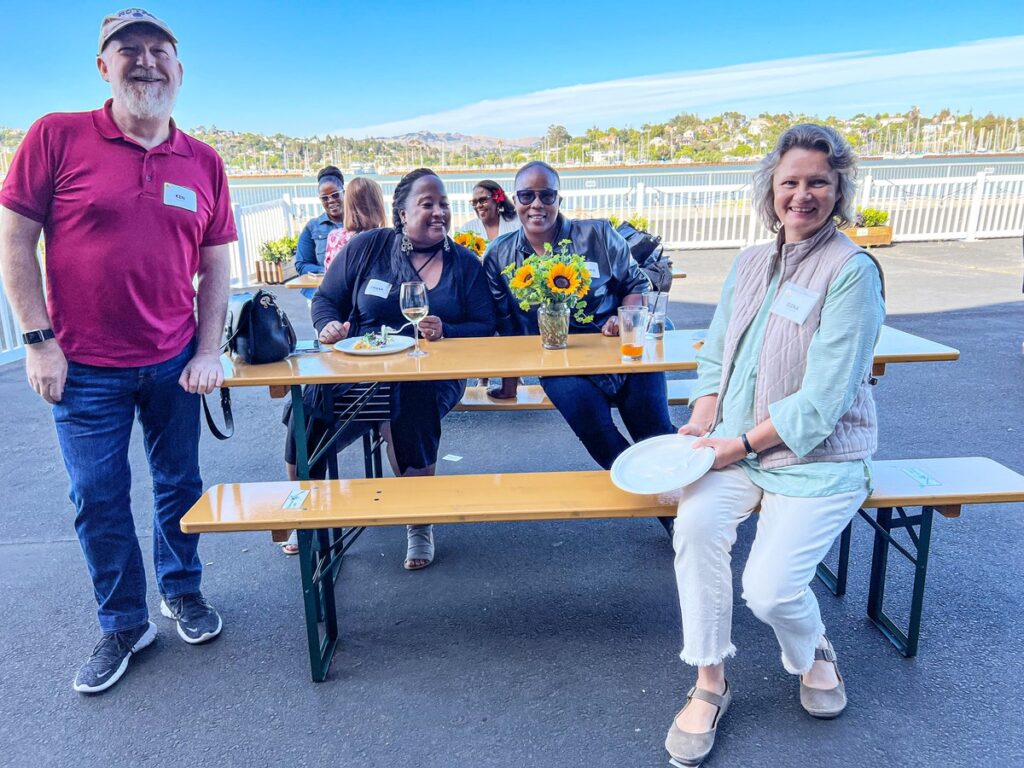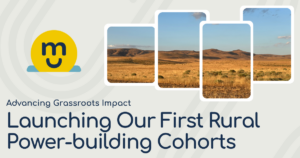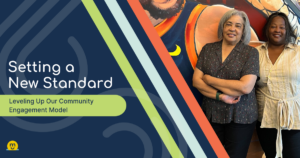In early 2022, Magic Cabinet set out to launch our first cohort in Solano County. Although it was a new-to-us community, several trusted leaders in the region encouraged us to explore it. We began by researching the landscape in Solano County, examining regional trends such as gentrification and migration patterns, and consulting with nonprofit and community leaders to determine where long-term support could have the most impact.
Most of the organizations we initially connected with didn’t meet our standard budget threshold of $500,000. Some had never received private philanthropic dollars, and many had never even heard of Magic Cabinet. The enthusiasm was there, but so was the hesitation. And the gaps in infrastructure ran deeper than those of other organizations we had partnered with.
Rather than shy away from these challenges, we adjusted our budget eligibility requirements and funding parameters, enabling us to remain in the region and successfully launch our first small-budget cohort. Our Solano County Engagement Report captures how we achieved this milestone. It reflects the insights shared, the lessons learned, and the values that guided our response.
Recently, our Chief Strategy Officer, Tiffany Johnson, sat down with three nonprofit and philanthropic leaders rooted in Solano County:
- Mike Ioakimedes, Chief Development Officer at Solano Community Foundation
- Kelly Batson, Chief Community Impact Officer, United Way Bay Area
- Elena Karoulina, Founding Executive Director, Sustainable Solano
What you’ll find below are insights from that conversation: reflections on Solano’s past, a snapshot of the current philanthropic landscape in Solano County, and a peek at the future we all want to help shape. More importantly, it’s a glimpse at what can happen when values come first and we seed collaboration over competition.
Solano’s History: The Need Wasn’t the Only Challenge
Long before Magic Cabinet entered Solano County, local nonprofits were already doing incredible work—building gardens, launching programs, and creating coalitions—all with a fraction of the resources available to neighboring counties. The primary challenge wasn’t due to low effort; it was also the result of low investment in the region.
According to United Way Bay Area’s Report, from 2018 to 2020, just 1 percent of Bay Area philanthropic dollars went to Solano and Napa combined. San Francisco, by contrast, received over 130x that investment, despite having the same need score. The numbers weren’t just disappointing, they revealed a pattern of disparity.
Elena Karoulina of Sustainable Solano also noted that these investment figures weren’t just abstract; she and many other community leaders in Solano were living it day to day. Her organization had grown out of necessity with almost no philanthropic support. When Magic Cabinet initially reached out to learn more about her organization, she didn’t think it was real. That kind of philanthropic investment had rarely surfaced in Solano County.
"The nonprofit desert is a real thing in Solano County. The county itself is not wealthy. We have to rely on grants, which are highly competitive. I've heard about invitation-only foundations, and I thought it was not an option for Solano County, seeing how few nonprofits and foundations there are. So when I got that call from Magic Cabinet, I thought it was a scheme. I was so happy it turned out to be true."
Elena Karoulina, Sustainable Solano
Solano’s Present: From Report to Reality
As the Chief Development Officer for Solano Community Foundation, Mike Ioakimedes is well-versed in the realities of the funding disparities in Solano County. He discussed the long-standing patterns of philanthropic underinvestment, the misconception that Solano is not ready for funding, and the opportunity to shift the narrative through better data and a shared vision for a thriving Solano County.
Guided by insights from the United Way Bay Area report, the Solano Community Foundation decided to shift its model, eventually expanding its role from a traditional community foundation to supporting the Solano County nonprofit ecosystem holistically.
During the conversation, Mike also shared a data point that stopped us in our tracks. The median annual expense budget for Solano County nonprofits was just under $88,000. Because many major funders in the region have a budget requirement of between $200,000 – $250,000, much of the philanthropic investment was going toward larger organizations in Solano County that were best positioned to take advantage of those funding opportunities.
Magic Cabinet’s model wasn’t built with rural, underinvested communities in mind. It was designed for regions with a dense network of nonprofits, where budget size could serve as a rough indicator of readiness. Solano County’s nonprofit ecosystem flipped that logic on its head.
Although these numbers weren’t known to us at the time, after speaking with nonprofit and community leaders, it was clear that we needed a change in our approach. Tiffany Johnson, Magic Cabinet’s Chief Strategy Officer, shared how we lowered budget thresholds, brought in capacity consultants, and restructured our approach for our first engagement in Solano County.
As a new funder in Solano County, community leaders and nonprofits in the region were understandably unsure of our intentions. Through research and dialogue, we identified several community-based organizations doing innovative work. So we adjusted our approach to better meet the needs of Solano County nonprofits and lay the groundwork for future investment.

Solano’s Future: A Bigger Pie
There is no shortage of need in Solano. But there is also no shortage of vision. As Kelly reminded us, the issue isn’t choosing which Bay Area counties are most deserving—it’s baking a bigger pie so everyone can have a slice. She shared what it meant when funders told her they used United Way Bay Area’s Report to start investing in Solano. That moment made all the advocacy feel worth it.
"Our first recommendation in our report is just to make a bigger pie. We're seeing needs everywhere—using an equity lens to prioritize is so key, so there's a focus on programs and services that are going to impact people who are most vulnerable and most marginalized. When COVID hit, we saw funders come together and add Solano to their geography. Why are we deciding only in times of crisis to fund Solano? Now's the time. Let's fund the work."
Kelly Batson, United Way Bay Area
Towards the end of our conversation, Mike outlined the roadmap that the Solano Community Foundation will use to navigate a path forward for regional nonprofits. This roadmap includes unrestricted funding, shared services, visibility for small organizations, and a willingness to support potential over polish.
Elena also reminded us that Solano is not a place of scarcity—it’s a place of ideas. It reflects national challenges and holds promising solutions. What’s missing is the investment and runway to test them.
Through long-term investment, Sustainable Solano hasn’t only expanded its work but also strengthened it. Since the launch of our second Solano cohort in 2023, the organization has achieved several milestones, including completing a financial audit, hiring an HR consultant, and hosting its first-ever large-scale fundraising event to commemorate 25 years in Solano County. This would provide the necessary infrastructure to enable the organization to focus on its mission while planning for the future.
A Call to Funders
We asked each speaker to offer one message they hope funders will carry forward. Kelly emphasized a movement from data to action, calling on nonprofits and funders to use the numbers in United Way Bay Area’s Report to make the case for funding. She also shared a vision for a pooled fund to support organizations in Solano County.
Energizing the local donor base remains top of mind for Mike, as well as partnering with funders like Magic Cabinet to continue amplifying the needs of Solano County. He seconded Kelly’s call for funders to ‘bake a bigger pie.’
Elena asked funders to bet on Solano County, and extended an invitation to visit the region and meet the leaders who are transforming the community for the better.
Although Solano County has experienced deep resource disparities compared to other Bay Area counties, the nonprofits in the region are poised to meet the moment with creative solutions and authentic partnerships. This includes funders who are willing to rethink the status quo and take smart risks.
If you’re looking for a place to start, we’d love to connect. Magic Cabinet is here to share what we’ve learned and to walk alongside others, ready to move with values at the center.



